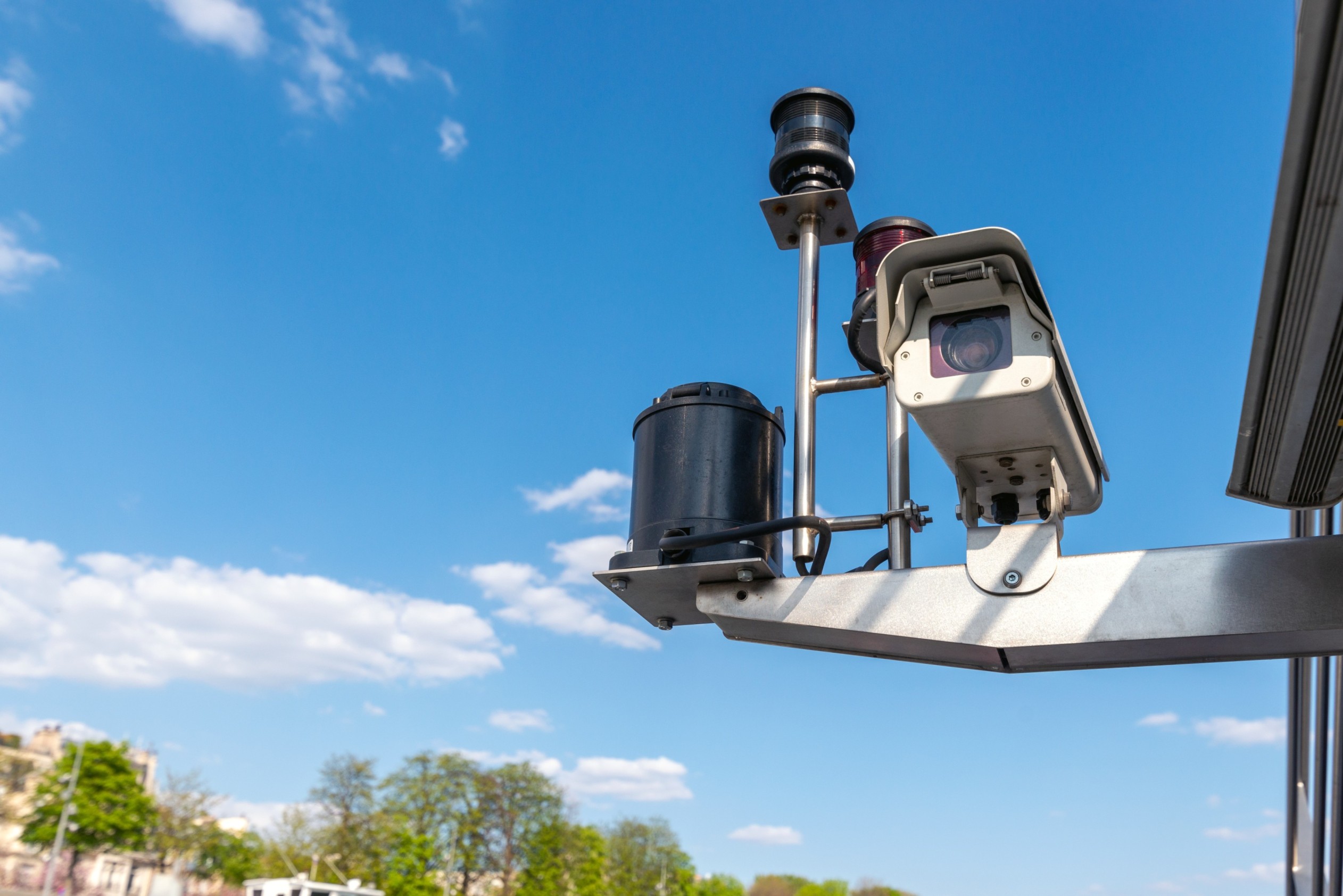Understanding Multi-Directional Radar Multi-directional radar is a high-tech type of speed detection technology utilized by…
Kansas City Police Use Multi-Directional Radar to Track Speed from Any Angle

Kansas City speed enforcement has evolved and become more sophisticated over the years. Officers now use multi-directional radar units that have the capability of recording speeds of vehicles from nearly any direction. These new models track vehicles coming towards, moving away from, or even crossing the radar beam.
For drivers, it also means that radar detection is no longer limited to head-on approaches. Multi-directional radar allows officers more flexibility for speeding enforcement and accurate readings on busy Kansas City roadways. Speeding Ticket KC explains how the technology works, how it’s used, and what it means for drivers who receive speeding citations.
How Multi-Directional Radar Works
Traditional radar devices measured speeds of vehicles moving in one direction—usually toward or away from the radar gun. Multi-directional radar is a different story.
The devices send and receive radio waves in multiple directions at once. When a moving vehicle reflects the waves back, the radar measures the change in frequency—a Doppler shift—to calculate speed.
Newer units can monitor more than one lane of traffic at a time. They also show which car the radar is tracking to reduce confusion if there are multiple cars nearby.
It helps to make radar readings more accurate and reliable, especially in Kansas City’s heavy traffic areas.
Why the Kansas City Police Use Multi-Directional Radar
Kansas City officers embarked on multi-directional radar for speed enforcement accuracy and safety. City streets have multiple lanes, curves, and intersections. Traditional radar missed vehicles crossing the officer’s beam path or driving in side lanes.
With multi-directional radar, officers can:
- Measure the speeds of vehicles approaching from any direction.
- Identify which lane each reading is in.
- Measure approaching and receding vehicles at the same time.
- Accurately measure data even when vehicles change lanes suddenly.
The technology assists the police in managing high-traffic locations such as I-70, US-71, and city intersections such as Troost Avenue and Bannister Road.
The result is more precise speed enforcement, fewer missed infractions, and fewer false readings.
Accuracy and Calibration Standards
Accuracy is most critical with multi-directional radar. Kansas City has a stringent policy that requires every radar unit to be properly calibrated at all times.
Officers calibrate their radar units at the start of every shift by using tuning forks that mimic specific speeds. The radar must register those speeds correctly before the radar goes into service on the highway.
All radar devices are also calibrated at least once a year by a qualified technician. Calibration tests all the sensors, antennas, and internal systems for interference or drift.
Speeding Ticket KC always reviews radar calibration records when defending our clients. If a radar device wasn’t correctly tested or certified, the reading may not hold up in court.
Radar Setup and Officer Training
Multi-directional radar requires skill and training to operate. Kansas City officers receive state-approved radar certification training before they operate the technology in the field.
Officers learn in training:
- How radar signals reflect back from moving vehicles.
- How to isolate the strongest target signal among numerous signals.
- How to avoid common pitfalls from terrain, weather, or reflection.
- How to document radar use and test results.
Radar position is also important. Officers must position their units to minimize reflection from nearby signs, fences, or other big vehicles.
Kansas City topography—with bridges, curves, and traffic lights—requires careful positioning to get an accurate reading.
Legal Use of Multi-Directional Radar in Kansas City
Radar evidence must meet some conditions before it can be accepted in court. Kansas City is subject to Missouri state laws that regulate the use, testing, and documentation of radar.
All radar-based speeding tickets must include:
- Make and radar serial number.
- Training radar certification of the officer.
- Recent radar calibration date and result.
- Result of the tuning fork test on the day of its use.
In the absence of these documents, radar readings cannot be accepted as accurate evidence.
That is where Speeding Ticket KC comes in. The firm reviews each case meticulously to verify that the radar was installed, tested, and used correctly.
If any part of that process was skipped or done improperly, Speeding Ticket KC can challenge the ticket on that basis.
Typical Issues That Affect Multi-Directional Radar
New radar equipment is highly advanced, yet there is always a possibility that it can give false readings in specific situations. Police officers in Kansas City are trained to recognize and prevent these issues.
Some of the most common issues are:
- Angle Error: When the radar beam hits a vehicle at a steep angle, the speed reading can be less than the actual speed.
- Weather Interference: Rain or snow can weaken radar signals and give false readings.
- Reflective Surfaces: Metal signs, guardrails, and other vehicles can reflect radar signals and confuse the device.
- Multiple Targets: Radar will detect more than a single vehicle on busy roads. Officers must choose the strongest, most stable return signal.
Kansas City police reduce these risks by following strict testing and setup procedures.
How Speeding Ticket KC Helps Motorists
If you’ve received a speeding ticket in Kansas City based on radar, Speeding Ticket KC can help. The company specializes in defending radar-based citations.
Their personnel review radar logs, officer certifications, and calibration records for any potential errors. If the radar was not calibrated or operated properly, this can be utilized by Speeding Ticket KC to craft a successful defense.
They spare clients costly tickets, license points, and higher insurance rates. All cases are reviewed with Kansas City’s legal protocols and radar enforcement laws in mind.
Technology and Transparency
Multi-directional radar renders traffic enforcement transparent. The devices display target speed, lane, and direction of travel in real time. Officers can record this information for later verification.
Some of these radar units are equipped with dash cameras, recording visual and speed evidence. This confirms which vehicle the radar targeted and helps to promote fair enforcement.
These capabilities are used by Kansas City law enforcement to help maintain public trust and the fairness of ticketing.
Impact on Kansas City Drivers
Drivers across Kansas City—especially on high-traffic roadways like I-435, I-35, and Ward Parkway—are more likely than ever to face multi-directional radar enforcement.
Because the units can target vehicles approaching from any direction, traditional radar detectors may not always provide drivers with early warning.
That is why it is a wise move to keep an eye on posted speeds and avoid making sudden lane changes or bursts of speed near patrol cars.
If you believe that your radar reading was incorrect or your ticket unfair, Speeding Ticket KC can review the evidence and determine if the radar installation was up to Kansas City standards.
Fair Enforcement and Motorist Rights
Kansas City’s use of multi-directional radar allows speed enforcement to be more data-driven and consistent. However, as a motorist, you do have rights if you are issued a radar-based ticket.
You are allowed to request radar test logs, officer training records, and calibration certificates. If those records don’t meet Kansas City standards, then you may have a solid defense.
Speeding Ticket KC ensures that every client’s case is examined for these factors. They aim for a balance between effective traffic enforcement and fair treatment for all motorists.
Final Words
Multi-directional radar has changed how Kansas City police monitor speeding. By reading vehicles from any direction, it increases accuracy and highway safety.
Yet even the latest radar must be properly calibrated and operated within the law. Regular testing, officer training, and documentation guarantee radar evidence is accepted by the court.
For drivers who are issued radar-based speeding tickets, Speeding Ticket KC offers experienced representation and a comprehensive understanding of Kansas City radar law.
Every radar reading must tell the truth—and a Kansas City Traffic lawyer works to make it so.
Frequently Asked Questions (FAQs)
1. What is multi-directional radar used by the Kansas City police?
It’s a radar system that measures vehicle speed from multiple angles, including cross and opposite directions.
2. Can Kansas City radar detect my car if I’m driving beside or behind the patrol car?
Yes. Multi-directional radar can measure speeds from any direction around the police vehicle.
3. How do police make sure radar readings are accurate?
Officers calibrate all radar daily with tuning forks and follow strict calibration procedures.
4. Do radar errors lead to inaccurate speeding tickets?
Yes. Interference, weather, or set-up errors will produce incorrect readings that can be challenged in court.
5. How does Speeding Ticket KC help to challenge a radar speeding ticket?
Speeding Ticket KC reviews calibration records, officer certifications, and set-up documents for errors that can lead to ticket dismissal.

